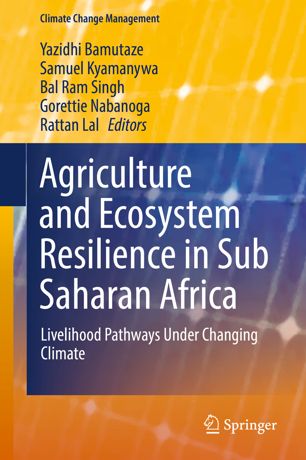

Most ebook files are in PDF format, so you can easily read them using various software such as Foxit Reader or directly on the Google Chrome browser.
Some ebook files are released by publishers in other formats such as .awz, .mobi, .epub, .fb2, etc. You may need to install specific software to read these formats on mobile/PC, such as Calibre.
Please read the tutorial at this link. https://ebooknice.com/page/post?id=faq
We offer FREE conversion to the popular formats you request; however, this may take some time. Therefore, right after payment, please email us, and we will try to provide the service as quickly as possible.
For some exceptional file formats or broken links (if any), please refrain from opening any disputes. Instead, email us first, and we will try to assist within a maximum of 6 hours.
EbookNice Team

Status:
Available0.0
0 reviewsThis volume discusses emerging contexts of agricultural and ecosystem resilience in Sub Saharan Africa, as well as contemporary technological advances that have influenced African livelihoods. In six sections, the book addresses the sustainable development goals to mitigate the negative impacts on agricultural productivity brought about by climate change in Africa. Some of the challenges assessed include soil degradation, land use changes, natural resource mismanagement, declining crop productivity, and economic stagnation. This book will be of interest to researchers, NGOs, and development organizations.
Section 1 focuses on climate risk management in tropical Africa. Section 2 addresses the water-ecosystem-agriculture nexus, and identifies the best strategies for sustainable water use. Section 3 introduces Information Communication Technology (ICT), and how it can be used for ecosystem and human resilience to improve quality of life in communities. Section 4 discusses the science and policies of transformative agriculture, including challenges facing crop production and management. Section 5 addresses landscape processes, human security, and governance of agro-ecosystems. Section 6 concludes the book with chapters uniquely covering the gender dynamics of agricultural, ecosystem, and livelihood resilience.